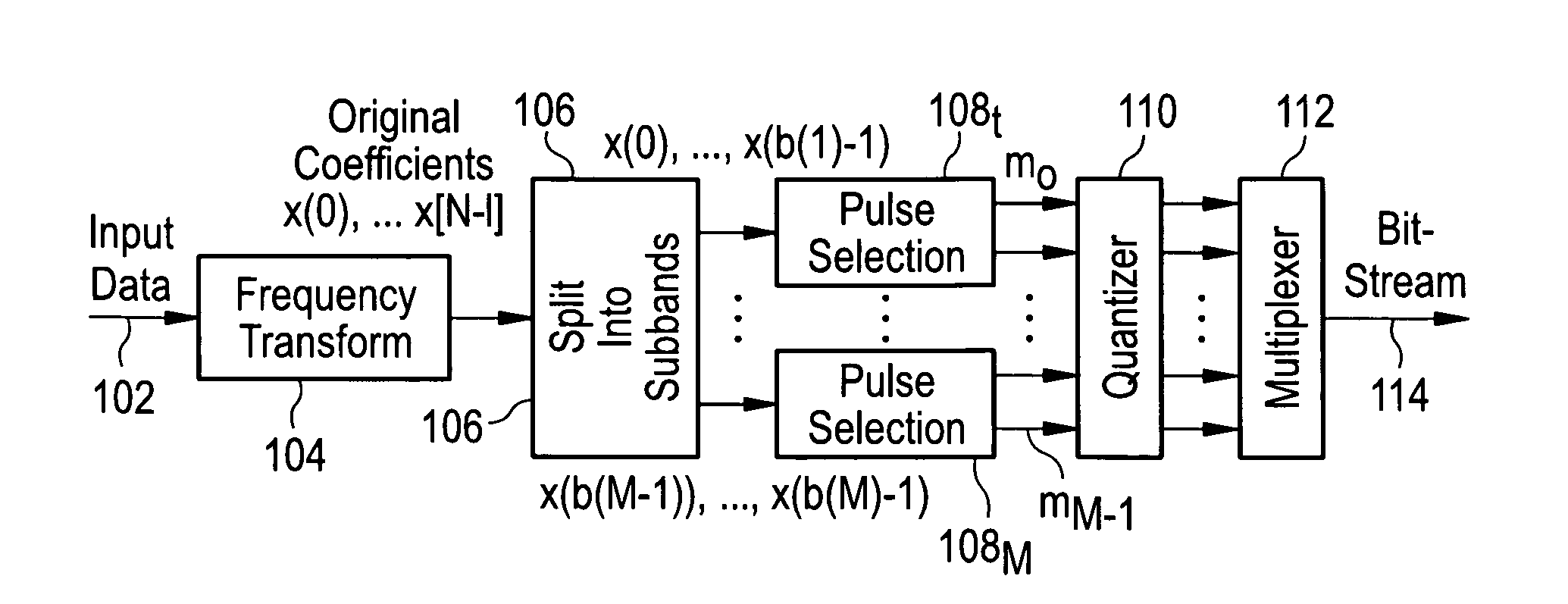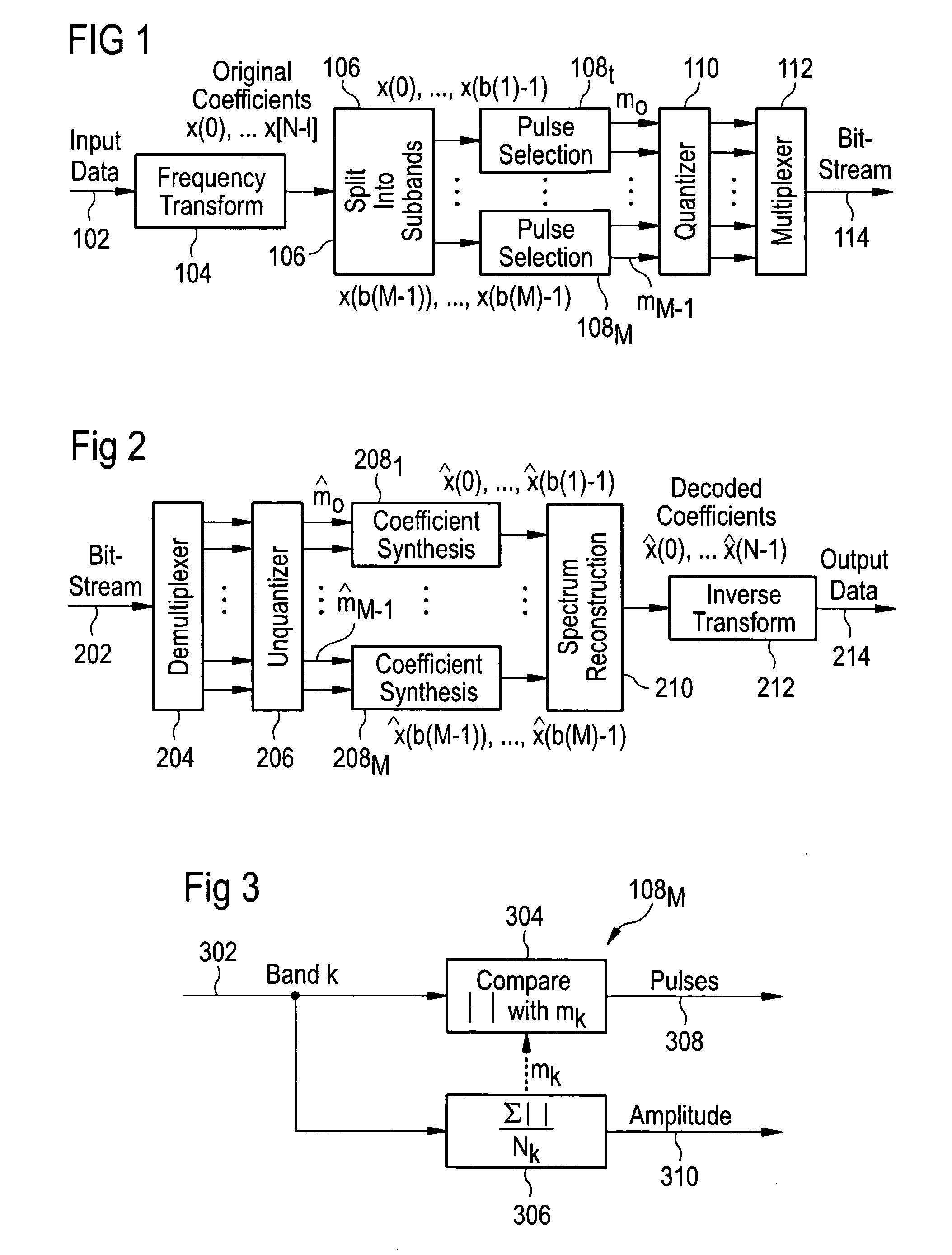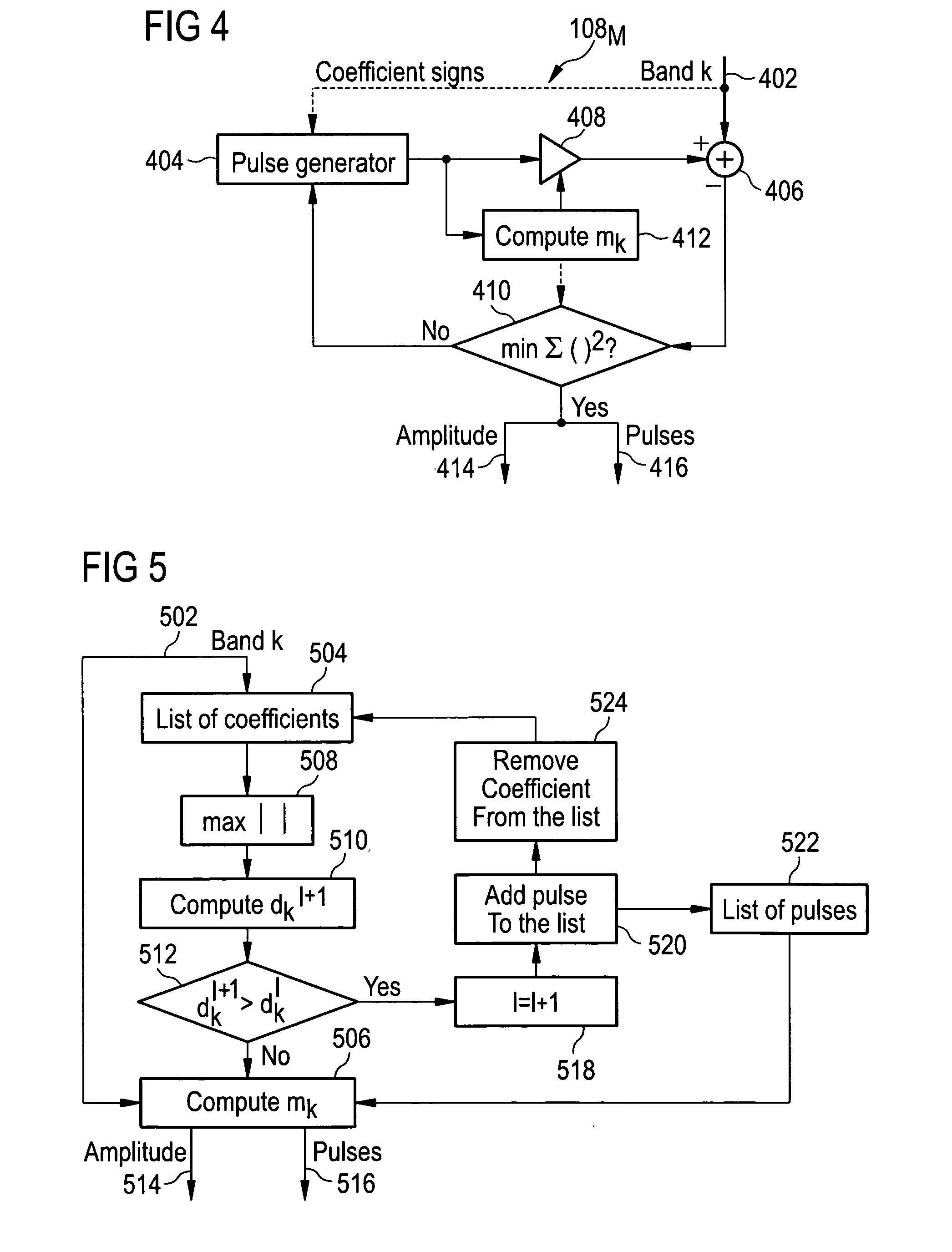Speech coding
a speech encoder and audio coding technology, applied in the field of speech encoders, can solve the problems of lossy coding being chosen, rapid degradation of quality, and high computational load of speech encoders, and achieve the effect of reducing computational load in speech encoders
- Summary
- Abstract
- Description
- Claims
- Application Information
AI Technical Summary
Benefits of technology
Problems solved by technology
Method used
Image
Examples
first embodiment
[0068]FIG. 3 shows in more detail the pulse selection block 108M of the encoder of FIG. 2. The pulse selection block 108M comprises an input 302, which is fed both to a pulse determination block 304 and an amplitude value determination block 306, and a first output 308 which outputs pulses determined by the pulse determination block 304 and a second output 310 which outputs an amplitude value determined by the amplitude value determination block 306 and an output 310.
[0069]In operation, the pulse selection block 108M receives a particular band k of a set of coefficients as described above and provides the coefficients to the pulse determination block 304 and the amplitude value determination block 306. By way of example, in one implementation there are fourteen bands, due to a bandwidth limitation of 50-7000 Hz, and ten coefficients per band. The amplitude value determination block 306 calculates an amplitude value mk according to the following equation:
mk=∑j=0Nk-1x(b(k)+j)Nk(1)
[007...
second embodiment
[0074]FIG. 4 shows in more detail the pulse selection block 108M of the encoder of FIG. 2. The pulse selection block 108M comprises an input 402, which is fed both to a pulse generator 404 and a comparator 406, a multiplication block 408, an optimization block 410, an amplitude value calculation block 412, a first output 414, and a second output 416.
[0075]Before operation of the pulse selection block 108M of FIG. 4 is described, the background to its operation in mathematical terms will be set out. The amplitude value mk, the position and signs of the pulses are given by the minimization of the following optimization criterion:
ek=∑j=0Nk-1(x(b(k)+j)-mkc(b(k)+j))2(3)
[0076]A condition for having a minimum is:
∂ek∂mk=0
[0077]In order to determine the minimum, it is necessary for the amplitude value mk to be known. This can be expressed as:
mk=∑j=0Nk-1x(b(k)+j)c(b(k)+j)∑j=0Nk-1c(b(k)+j)2(4)
that is, the absolute values of the selected coefficients added together divided by the number of puls...
third embodiment
[0090]FIG. 5 shows in more detail the pulse selection block 108M of the encoder of FIG. 2. This pulse selection block 108M operates iteratively in order to carry out a coefficient-by-coefficient examination and extract particular pulses for encoding. The pulse selection block 108M comprises an input 502, which is fed both to a coefficient memory 504 and to an amplitude value calculation block 506. The coefficient memory 504 is coupled in sequence to various other blocks: a maximum coefficient selection block 508, a dk computation block 510, a comparison block 512, and (via a “no” branch), the amplitude value calculation block 506. The amplitude value calculation block 506 has two outputs—a first output 514 for an amplitude value and a second output 516 for pulses. In addition to the blocks already described, a branch leading off a “yes” branch of the comparison block 512, is coupled in turn to a counter 518, a pulse collection block 520, and a pulse memory 522 (which are concerned w...
PUM
 Login to View More
Login to View More Abstract
Description
Claims
Application Information
 Login to View More
Login to View More - R&D
- Intellectual Property
- Life Sciences
- Materials
- Tech Scout
- Unparalleled Data Quality
- Higher Quality Content
- 60% Fewer Hallucinations
Browse by: Latest US Patents, China's latest patents, Technical Efficacy Thesaurus, Application Domain, Technology Topic, Popular Technical Reports.
© 2025 PatSnap. All rights reserved.Legal|Privacy policy|Modern Slavery Act Transparency Statement|Sitemap|About US| Contact US: help@patsnap.com



